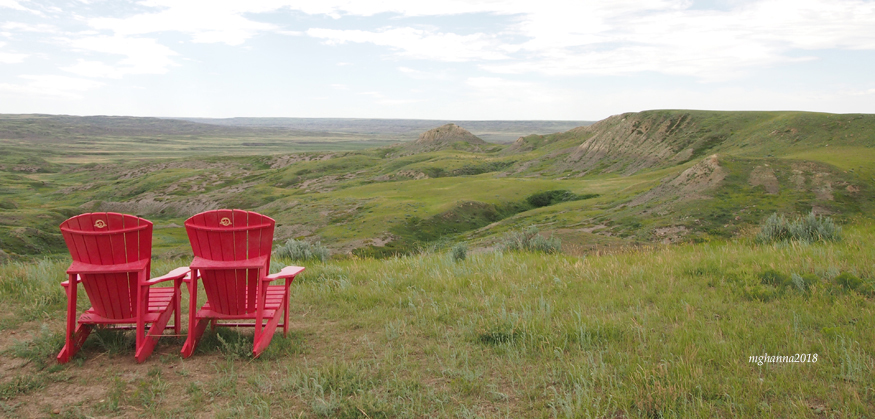
The majority of today’s urban-dwellers are far removed from the process of raising their own food. They forage fruit and vegetables at grocery store bins, and meat appears entombed in plastic wrap on plastic trays. It is all clean and antiseptic, far removed from the messy and sometimes conflicted business of raising your own meat.
Abe and Addie were surrounded by the meat they would eventually eat. It mooed, grunted, squealed, bleated, cackled, crowed and gobbled. They fed it, watered it, doctored it, housed it, sometimes even named it. They cared for it but they did not anthropomorphize or romanticize it, for they knew it would eventually end up on the dinner table, someone else’s if not their own..
Meat – be it beef, pork, chicken or turkey – was an integral part of every meal. Access to meat wasn’t the problem – all the cows, pigs, chickens and turkeys they raised provided an endless supply. Preserving it was, for Addie had neither freezer nor refrigerator. Fortunately, they had options.
Abe made repeated diary entries about “salting meat:” In 1913, he paid $1.25 for 50 lbs of salt, presumably to salt meat.
Monday, March 20, 1911: Salted meat.
Saturday, March 21, 1914: Salted pork and repaired stable in pm
Thursday, 13 April, 1926: Cut up & salted pork
Tuesday, September 27, 1932: Cut up & salted beef in a.m.
Just how does one “salt” beef? Here are the instructions from The Cook Not Mad, or Rational Cookery, first published in Canada in 1831 (reprinted 1972 by The Cherry Tree Press, Toronto):
Put together three quarts salt, six ounces salt petre, one and a half pint of molasses, and water sufficient to cover your meat after laid into the barrel. Sprinkle the bottom of the barrel with salt, and also lightly sprinkle between the layers of meat as you pack, when done, pour on your pickle and lay on a stone or board to keep the whole down. Beef salted after this method during the fall or winter may be kept nice and tender through the summer by taking it up about the first of May, scald and skim the brine, add three quarts of salt, when cold pour back upon the beef.”
Canning meat was an alternative to salting it. This could be tricky because, if the meat wasn’t cooked long enough in the hot water bath, it could spoil and become infected with botulism. Despite the risk, Addie did can beef and chickens. (As an aside: we canned chickens when I was growing up; canned chicken was one of our favourite Sunday lunches.)
Friday, November 24, 1933: Helped Addie cut up meat for canning purposes.
Keeping meat frozen wasn’t a problem once winter and its freezing temperatures arrived – the whole outdoors became a freezer. Abe and Addie had what they called the “meat box;” it sat outside on the north side of the house. After cutting up the meat, they packed it in the box along with ice cut from Pinto Creek. They also put the cut meat in sacks and buried them in wheat in the granary. The wheat moderated fluctuations in the daily temperature and often kept the meat frozen through to spring.
Monday, December 4, 1933: Addie and I repaired meat box. Fair and colder, light snow in early am.
Friday, December 9, 1938: hauled 3 quarters beef to house & helped Addie cut up and sack same so that it could be frozen later then hauled same to granary to be stored in wheat bin.
If there was more meat than Abe and Addie could deal with, they sold some of it to the local butcher or one of the townsfolk who did not have their own cattle.
Tuesday, December 12, 1933: Cut down beef, moved fronts to house. Addie assisted. Hitched up and delivered hind 1/4 (137 lbs) to Rev. Wilkinson in pm.
Butchering entailed more than cutting the carcass into roasts and steaks. Those tasks fell to Addie and daughter Edith who were kept busy for several days after butchering finished.
Friday, December 4, 1936: Addie & Edith rendered lard, salted & packed bacon & hams & made sausage.
Thursday, December 10, 1936: Addie & Edith cut up 2 front quarters beef, rendered fat.
With the basement shelves full of canned vegetables and fruit, and meat “on the hoof,” in sealers or frozen in either the meat box or the granary, Addie was always able to spread a substantial meal for the family and for friends when they came calling:
Thursday, December 8, 1938: Mrs. Alex McCaslin assisted Addie & Edith entertain the Ladies Aid in pm. Alex came at 6K, both having supper here & staying for the evening. Had first roast of new beef which was of excellent quality.
#HomesteadEra #PrairieLife #FarmLife #RuralLife #FoodPreservation #OurBullsLooseInTown #MeyronneSaskatchewan

I love your anecdotes, Margaret. Reminders of youth and a time when survival did not mean going to the store for all we needed.
LikeLike
So true. One sad consequence of “convenience” is that we have lost so many skills.
LikeLiked by 1 person
Reminds me a little of my grandparents when they lived and farmed in Iowa. A self-sufficient way of life.
LikeLike